Borscht Recipe: a Hearty Beet Soup from Eastern Europe
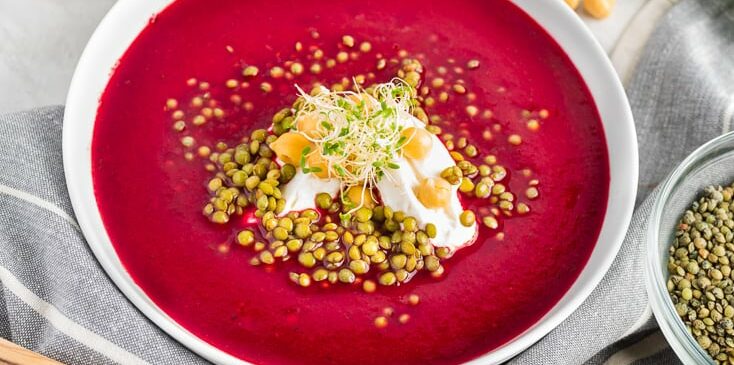
During wintertime, there’s nothing better than digging into a bowl of warm, nourishing soup. When you want one that’s filling and is a staple Eastern Europe that uses their common beet vegetable, it’s time to make borscht!
What Is Borscht?
If you ask someone from Eastern Europe, it’s likely that they’ll tell you borscht originated from their country. Poland, Russia and Ukraine all claim borscht, although most experts believe that borscht was “invented” in Ukraine, where it spread to surrounding Baltic and Slavic countries, most likely thanks to Russia’s influence and presence in the region.
“Borscht” is a Yiddish word, but it’s derived from an old Slavic word for a hogweed plant, bursci, which was the main ingredient in a soup that would’ve been the precursor to borscht. That soup was made from pickled hogweeds. While beets later replaced hogweeds in borscht, the pickled aspect remains, as borscht is traditionally tart.
Borscht doesn’t include fancy ingredients. It was never intended as a fancy dish; in fact, it was a poor man’s soup — a way to make a hearty meal out of whatever was on hand. Beets grow freely and abundantly in Ukraine, so it makes sense that beets wound up being one of the main ingredients.
Borscht didn’t take on outside of Eastern Europe until Russian emperors began hiring French chefs to cook for them. These chefs, who learned how to make borscht in order to prepare it for their employers, eventually took the dish back to France, where it was cautiously greeted by the public.
Stateside, borscht made its way over the Atlantic by way of Eastern European Jews, who brought their borscht soup recipes along with them. A region of upstate New York even became known as “the Borscht Belt.” Jewish-Americans would flock to the area, which had Jewish-owned resorts and restaurants, because many anti-Semitic establishments refused service to Jews. Borscht was one of the most popular dishes these places served, and offered a link to the home country.
What Is Traditional Borscht?
It’s hard to pin down a “traditional” borscht recipe, because each country has its own spin and, in fact, each chef has their own way of mixing it up. Some borsht recipes have cabbage, while others contain potatoes. Some are vegetarian, while others are heavy on the meat.
In a winter borscht, a flavorful broth, a sour taste and a lovely red color, thanks to the beets, are typical characteristics. There are versions of borscht that are meant to be served cool, as a refreshing respite from summer heat.
This easy borscht recipe uses beets, so the soup will have that gorgeous color associated with borscht. We’ll also add parsnips and a heap of seasonings, including Dijon mustard, tarragon, garlic and red wine, for a deliciously flavorful vegetarian borscht.
This recipe doesn’t have some of the heartier root veggies that other borscht recipes do, like potatoes. Instead, to give this borscht some staying power and nutrients, we’re using lentils and chickpeas. Not only do these ingredients keep the borscht true to its “poor man” roots — both ingredients are easy on the wallet — but they’re full of fiber and other nutrients, making this borscht a seriously healthy recipe.
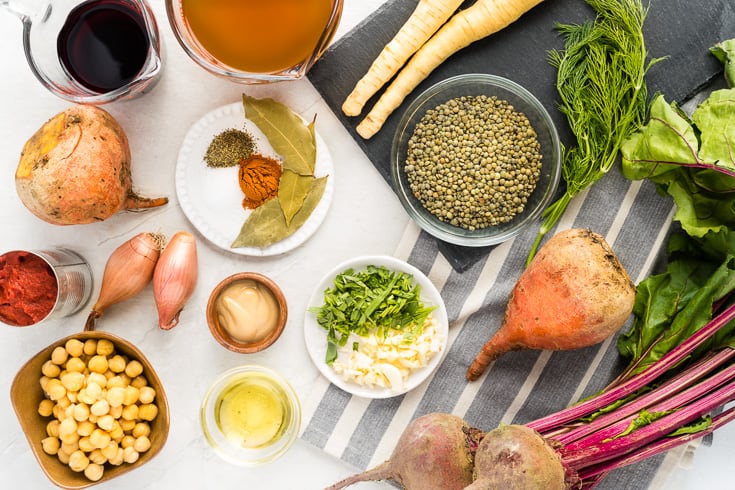
Nutrition Facts
Borscht is loaded with healthy ingredients, led by beets, so it’s not surprising to see how nutrient-dense this dish is. Beets pack in a good amount of folate, fiber and manganese for a low number of calories.
In fact, one serving of this borscht deliver nearly half of our daily requirement for both manganese and vitamin A.
One serving (351 g) serving contains:
- Calories: 193
- Total Carbohydrates: 31.2 g
- Fiber: 8 g
- Sugar: 11.9 g
- Total Fat: 4.6 g
- Saturated Fat: 0.6 g
- Polyunsaturated Fat: 0.9 g
- Monounsaturated Fat: 2.7g
- Trans Fat: 0 g
- Protein: 7 g
- Cholesterol: 0 mg
- Sodium: 310 mg (20% DV*)
- Vitamin A: 1117 IU (48% DV)
- Manganese: 0.882 mg (49% DV)
- Copper: 0.367 mg (41% DV)
- Folate: 143 mcg (36% DV)
- Vitamin C: 17.9 mg (24% DV)
- Phosphorus: 159 mg (23% DV)
*Daily Value: Percentages are based on a diet of 2,000 calories a day.
How to Make Borscht
Before getting started, there is a little prep that will make this borscht recipe even easier to make. Chop up the beets and parsnips, along with the fresh tarragon. Using dried? Substitute one teaspoon instead.
You’ll need already cooked lentils for this recipe, so you can make those ahead of time or use some that are leftover from another recipe. Finally, you’ll need a food processor to blend the veggies into a broth, so pull that out ahead of time. Now you’re ready to make this beet borscht recipe!
Start by heating a large pan over medium heat. Sauté the garlic, tarragon, cayenne, salt and pepper for about 5 minutes.
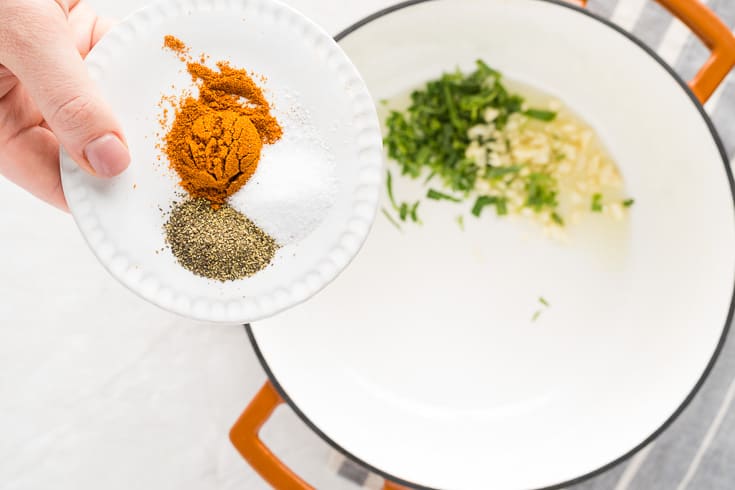
Add in the remaining ingredients, except the lentils and chickpeas, and bring to a boil. If you want more of a meat taste, feel free to use beef bone broth or chicken bone broth.
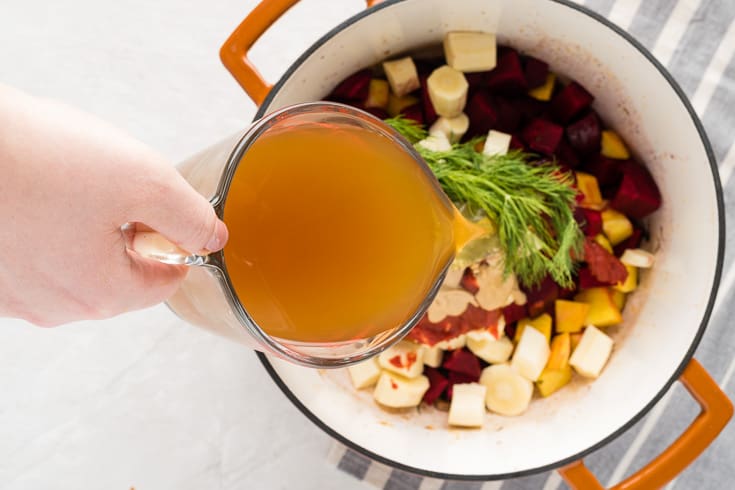
Let the mixture simmer on a medium-low temperature for 20 minutes, or until the vegetables are softened. Discard the bay leaves here, and remove the pan from heat.
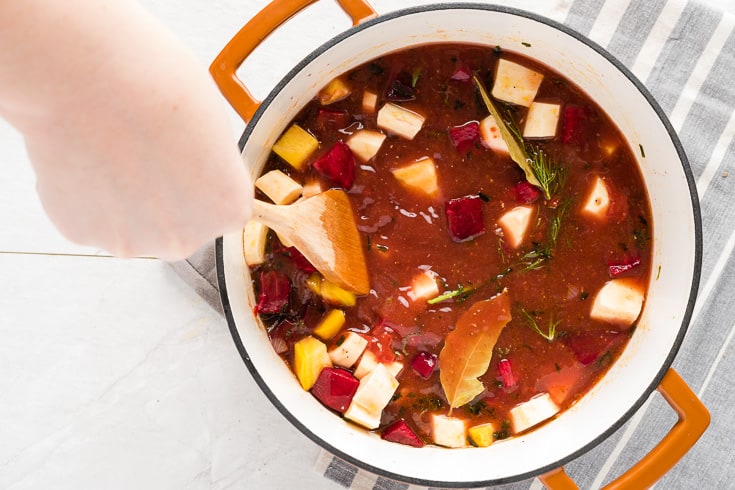
With a slotted spoon, scoop the veggies into a food processor.
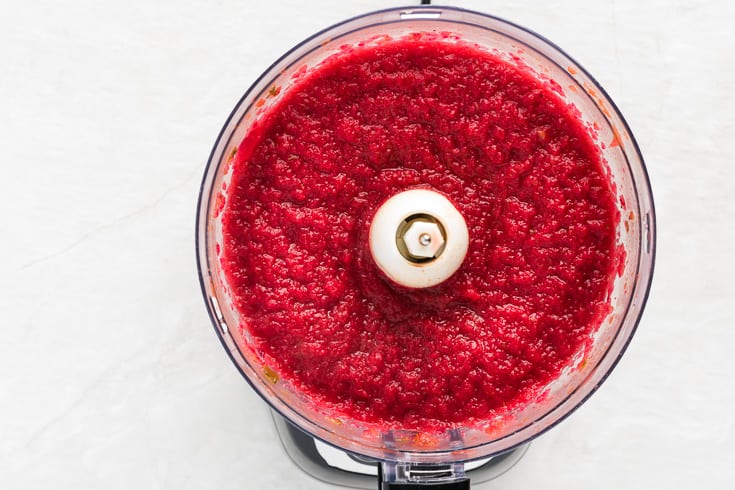
Add the vegetable mixture back into the pot, then add in the chickpeas and lentils. Stir to combine the broth with the beans.
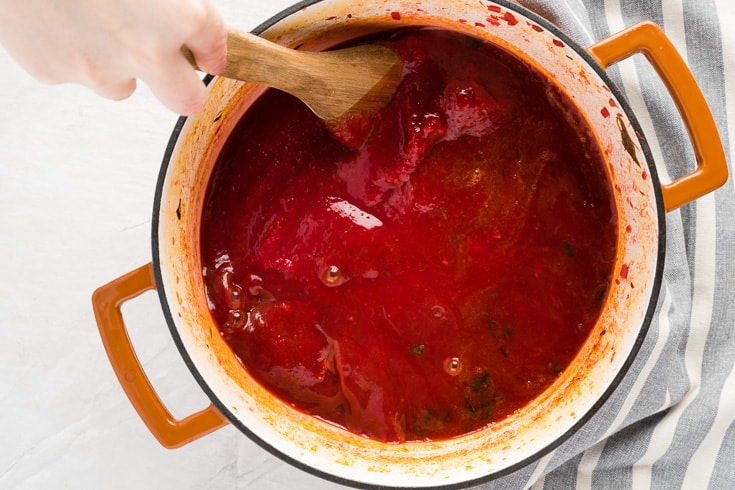
Serve this borscht recipe warm. If you want, you can top your bowl off with a dollop of plain coconut or goat milk yogurt, or goat milk kefir.
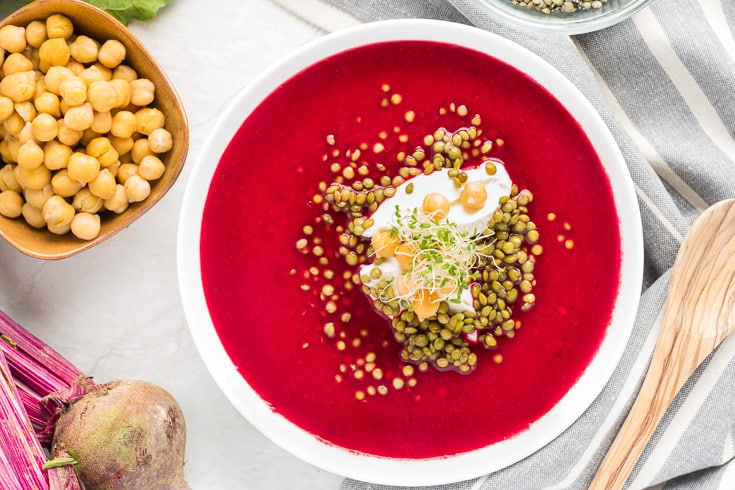
Other Great Winter Dishes
- Butternut squash soup
- Stuffed peppers with rice
- Lamb stew
- Bison chili
- Stuffed cabbage rolls
- Avgolemono soup
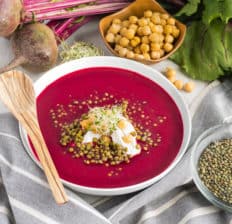
Borscht Recipe
- Total Time: 50
- Yield: 8 1x
- Diet: Gluten Free
Description
Not sure what to do with beets and want a classic Eastern European dish that people consume on the daily? Try this delicious borscht.
Ingredients
- 6 cups low sodium vegetable broth (or beef bone broth)
- 2 tablespoons avocado oil
- 3 beets, chopped
- 2 parsnips, chopped
- 1 tablespoon Dijon mustard
- 1 tablespoon tarragon, chopped
- ¼ teaspoon cayenne
- 1 tablespoon chopped garlic
- ½ cup dry red wine
- one 12-ounce can tomato paste
- ¼ cup dill
- 1 cup cooked lentils
- 1 cup chickpeas (from a can), rinsed and drained
- 3 bay leaves
- ½ teaspoon sea salt
- 1 teaspoon pepper
Instructions
- In a large pan over medium heat, sauté garlic, tarragon, cayenne, salt and pepper for about 5 minutes.
- Add remaining ingredients except the lentils and chickpeas, bringing to a boil.
- Let simmer on medium-low for 20 minutes, or until veggies are soft to cut.
- Discard bay leaves and remove from heat.
- With a slotted spoon, scoop all the veggies into a food processor.
- Blend until smooth, then pour veggies back into pot.
- Add chickpeas and lentils and stir to combine broth with veggies.
- Serve warm, perhaps with some crusty bread or as a starter dish.
- Prep Time: 15 min
- Cook Time: 25 min
- Category: Soups, Appetizers
- Method: Stovetop
- Cuisine: Ukrainian
Nutrition
- Serving Size: 1 serving (351 g)
- Calories: 193
- Sugar: 11.9 g
- Sodium: 310 mg
- Fat: 4.6 g
- Saturated Fat: 0.6 g
- Unsaturated Fat: 3.6 g
- Trans Fat: 0 g
- Carbohydrates: 31.2 g
- Fiber: 8 g
- Protein: 7 g
- Cholesterol: 0 mg
Comments
Please keep comments under 200 characters.



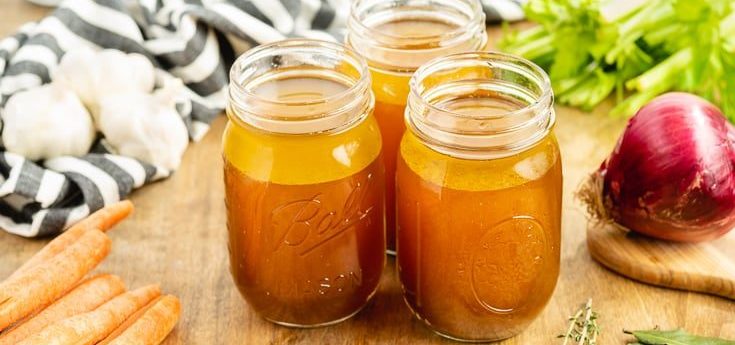
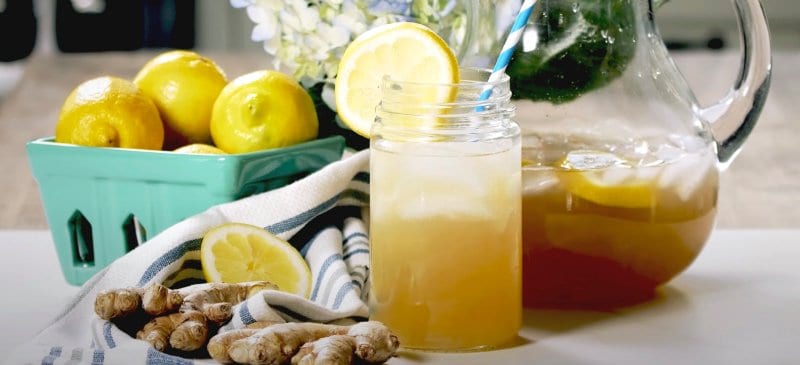
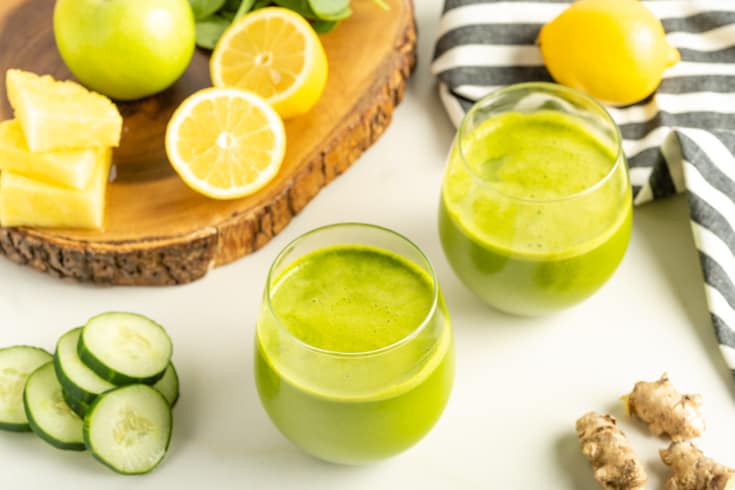
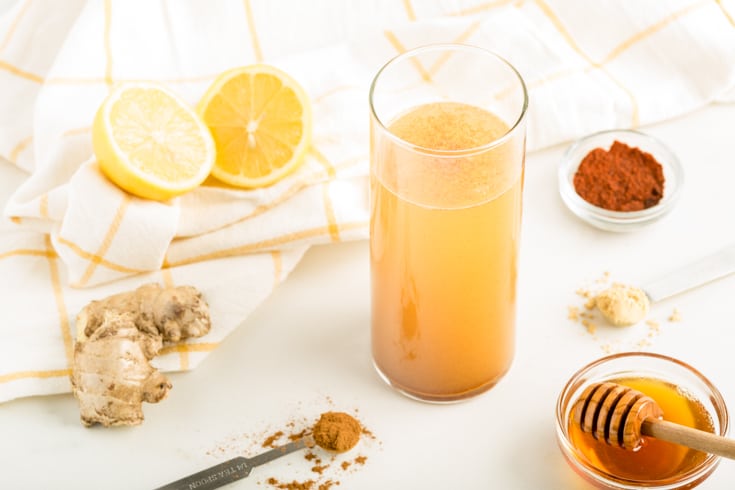
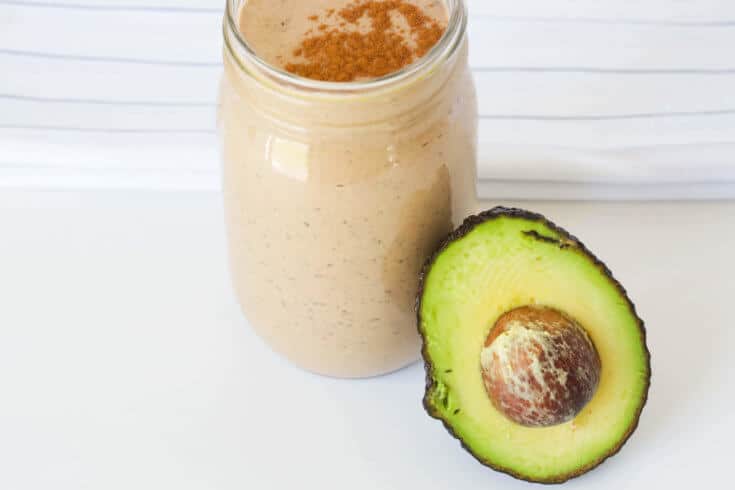


With all those ingredients…back in the day…it wouldn’t have been a poor man’s soup!
The nutrition facts does not say how much is a serving….